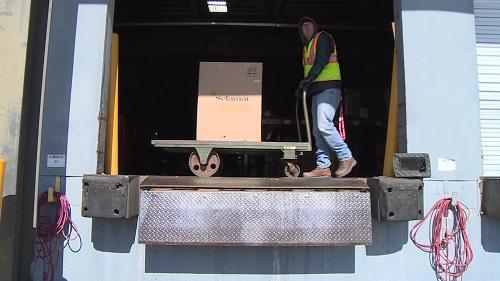Loading docks are an essential part of many workplaces, providing a crucial link between the outside world and the warehouse or factory floor. They are the gateways through which goods and materials enter and leave the building, and as such, they need to be properly maintained and operated to ensure the safety of workers and the smooth functioning of the business.
In this blog post, we will explore the importance of loading dock safety in the workplace and discuss some key steps that businesses can take to prevent accidents and injuries at their loading docks.
First and foremost, it’s important to recognize the potential hazards that exist at loading docks. These can include heavy machinery and equipment, such as forklifts and pallet jacks, which can cause serious injuries if they are not properly operated. In addition, the loading dock itself can pose a threat, with potential slip and fall hazards due to wet or uneven surfaces, as well as the risk of being struck by falling objects.
To address these hazards, businesses should implement a comprehensive loading dock safety program that includes training for workers, regular inspections of equipment and the loading dock itself, and clear safety protocols for loading and unloading. This should include procedures for safely operating forklifts and other machinery, as well as guidelines for handling heavy items and securing loads to prevent them from falling.
In addition to training and inspections, businesses should also consider implementing safety features at their loading docks. This can include barriers and guardrails to prevent workers from falling, as well as warning signs and labels to alert workers to potential hazards.
Another important aspect of loading dock safety is ensuring that the loading dock itself is in good condition. This means regularly inspecting the dock for any damage or wear and tear, and making repairs as needed to prevent accidents. This can include fixing any cracks or holes in the pavement, as well as checking the condition of the dock leveler and making sure it is functioning properly.
By taking these steps, businesses can help to create a safer working environment at their loading docks and reduce the risk of accidents and injuries. This not only protects workers and helps to prevent costly downtime, but it can also improve the overall efficiency of the business by ensuring that goods and materials can be loaded and unloaded safely and quickly.
In conclusion, loading dock safety is an essential part of any workplace, and businesses should take steps to ensure that their loading docks are safe and properly maintained. This can include implementing safety protocols, training workers, and regularly inspecting the loading dock and equipment. By prioritizing loading dock safety, businesses can protect workers, improve efficiency, and ensure the smooth operation of their facilities.
Do you need Online Training for Loading Docks?
Try a free demonstration of our Loading Docks training program, where you can see the full content of the training program and how the system works from the perspective of the trainee:










